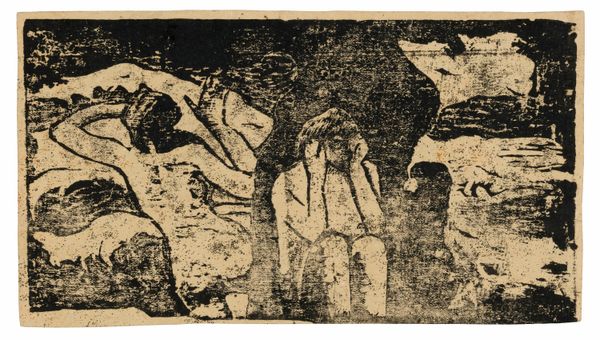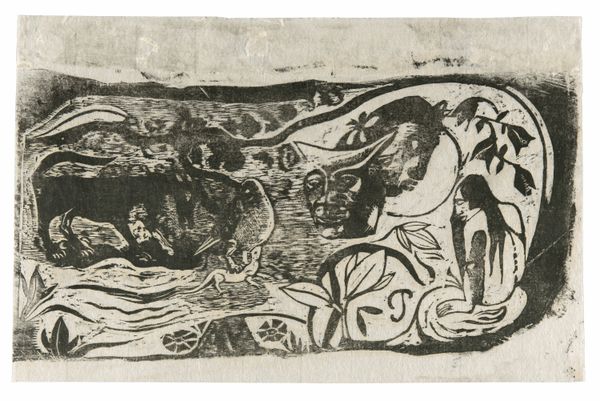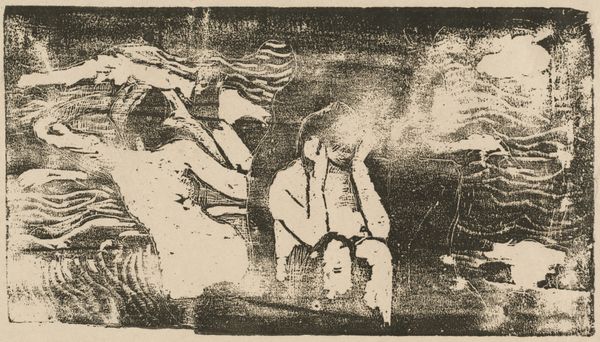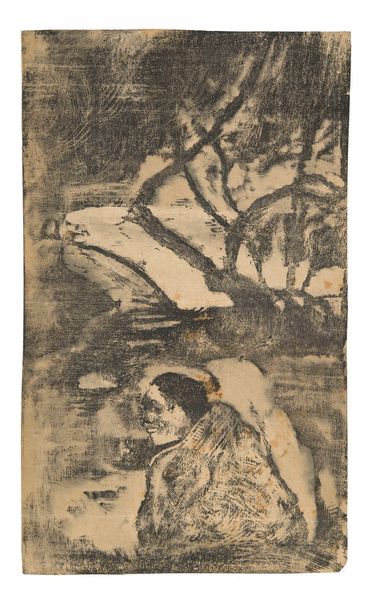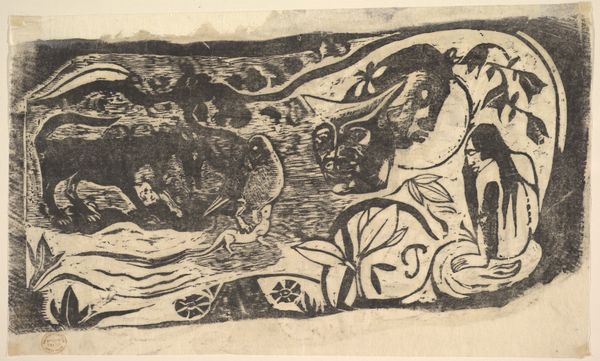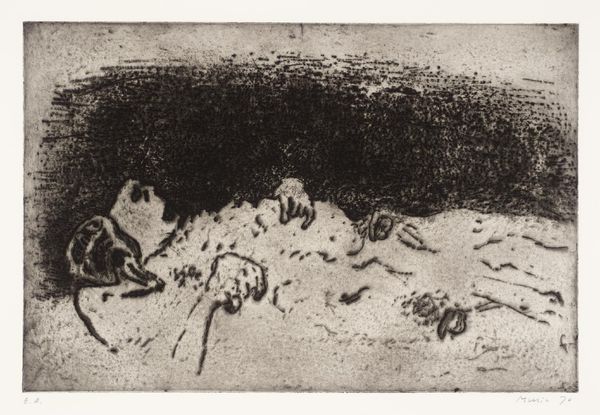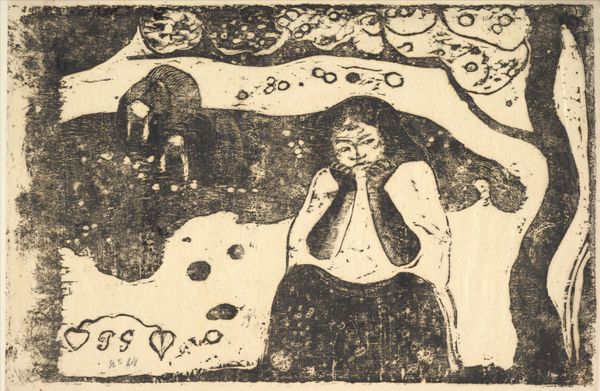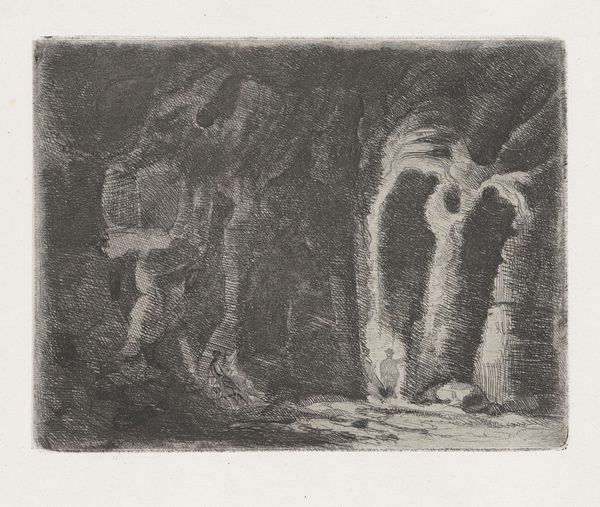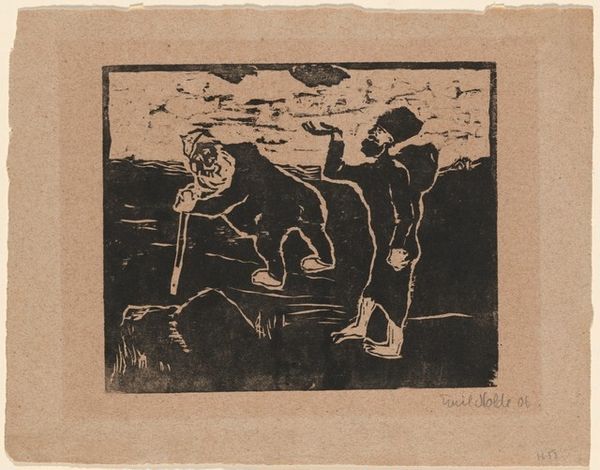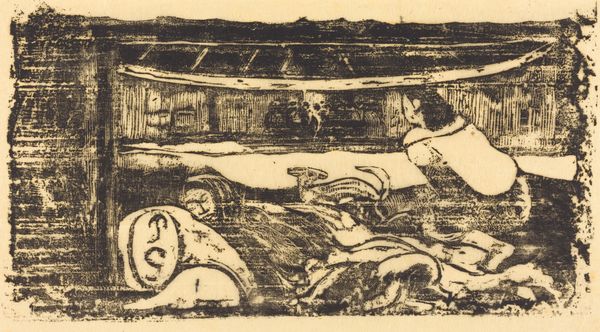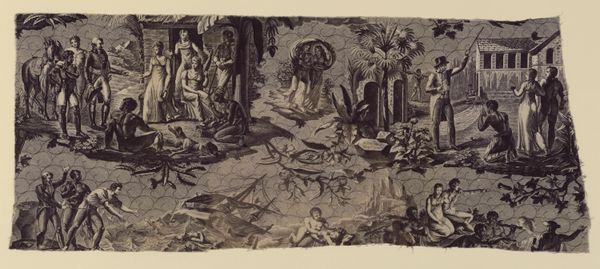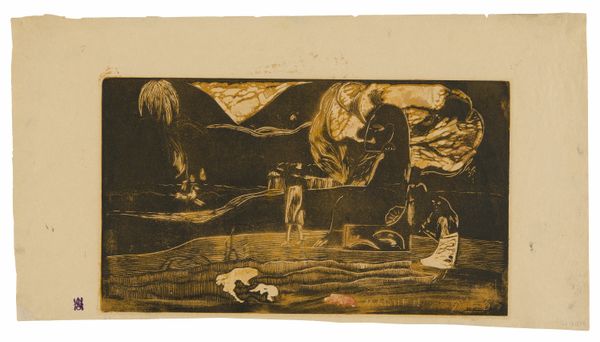
At the Black Rocks, from the Suite of Late Wood-Block Prints 1898 - 1899
0:00
0:00
drawing, print, paper, woodblock-print
#
drawing
# print
#
figuration
#
paper
#
woodblock-print
#
symbolism
#
nude
Dimensions: 103 × 185 mm (image); 127 × 238 mm (sheet)
Copyright: Public Domain
Curator: This is "At the Black Rocks, from the Suite of Late Wood-Block Prints" by Paul Gauguin, created between 1898 and 1899. It's a woodblock print on paper, a medium he explored quite extensively in his later years. What strikes you first about it? Editor: The stark contrast immediately creates a mood of deep introspection, almost unease. The figures seem caught between anguish and resignation. There's a raw emotionality in the way Gauguin renders their forms, or lack thereof, against that almost violently textured landscape. Curator: Gauguin's engagement with non-Western art forms profoundly influenced his visual language. He lived in Tahiti and French Polynesia at this time, and was trying to distance himself from Western cultural traditions by engaging with primitivism. The roughness of the woodcut here might express some of those views, don't you think? Editor: Absolutely. The simplified forms, the rejection of naturalistic representation… it speaks to Gauguin's attempt to connect with what he perceived as a more authentic, "primitive" mode of being. But it's important to critically examine that impulse. How much was it romanticizing colonial power dynamics, rather than a true cross cultural exchange? Curator: That's right. While he sought authenticity, it’s filtered through his own lens as a European artist, inevitably shaping the narrative. It raises uncomfortable questions about cultural appropriation and representation that we need to consider when approaching this work. Editor: The emotional charge is powerful. There's something universally relatable about the figures, though their depiction certainly carries the weight of their time. What's interesting is the ambiguity in their emotional expressions. Is it grief, anxiety, or something more complicated, perhaps tinged with defiance? It mirrors the broader societal anxieties of Gauguin’s era that are still relevant now. Curator: The print was part of a larger suite and reveals that the narrative unfolded through the series. Gauguin sought to represent emotional landscapes just as vividly as he did physical locations. "At the Black Rocks" reveals the psychological interiority he felt about being in Polynesia. Editor: Thanks. That reading illuminates something vital about Gauguin’s self-aware position within the social discourse of the time and about the enduring capacity of the work to prompt ongoing conversations. Curator: Indeed. Gauguin’s complicated relationship with subject and culture prompts critical inquiry. We invite listeners to join the conversation.
Comments
No comments
Be the first to comment and join the conversation on the ultimate creative platform.
